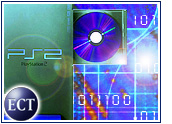
After recently building a new system with one of the latest Nvidia cards powering the graphics, I poked around Nvidia’s demo area to see if I could push the new card to its limits. After installing a few of the demos designed to showcase Nvidia power, I was blown away. I’ve seen prerendered graphics look as good as the Dusk and Vulcan demos before, but never have I seen anything quite like these demos in real-time 3D. They clearly demonstrate the power of Nvidia’s GPUs to handle all kinds of cutting-edge effects.
I was at Comdex several years ago when SGI demonstrated a new series of low-cost workstations. The demonstration had thousands of people in the audience — including members of the press all around me — both gasping and cheering. Even meeting with now-defunct 3Dfx before the company rolled out the Voodoo 4000 and 5000 series of graphics cards — the first mainstream cards to handle real-time antialiasing — didn’t have the same wow effect as the SGI demos. Since that series of SGI demonstrations, I’ve seen no technology test compare to the real-time graphics power of SGI — until recently, when I tested the Nvidia demos.
While there is certainly much debate among power users and overclockers as to whether Nvidia or ATI has taken the lead in raw graphics power, the answer — as is usually the case in matters technological — depends on the task at hand. After all, there is more to graphics than frame rates. Clearly, the process of putting together a technology demo plays a major role in user perception — call it mind share — which often can push a card into the consumer eye very quickly and give it the lead in the market.
In the interest of hearing from the design team responsible for Nvidia’s demos, I turned to Mark Daly, Nvidia’s senior director of content development, for an exclusive interview. Daly has been with Nvidia since 1998 and first served as the company’s director of technical marketing. In his current capacity, he is responsible for the company’s developer evangelism and technology teams as well as the performance analysis and demonstration development teams.
TechNewsWorld: You oversee Nvidia’s content development teams. Can you describe your role there?
Mark Daly: We call the team “Content Development” because it encompasses all of the efforts that we put into working with application developers that create great game content as well as internal demo content development at Nvidia. We have a talented team that is able to “play” with the new features of upcoming hardware in our own internal development, and then encapsulate what we learn during this process into examples and courses that we share with the developer community.
TNW: The demos you produce are truly amazing. How do you develop them?
Daly: The demos are very much a group effort at Nvidia. We have a dedicated demo team with both programming and art staff that produce the final products, but many of the ideas and effects come from engineering, marketing and sales teams throughout Nvidia. Also, since most of the demo development happens on early hardware with early drivers, we rely heavily on our driver team to help get everything rock solid prior to a product launch.
I’m very proud of the accomplishments of the demo team. We strive to constantly push the envelope in using new hardware features, but we recognize that this is most successful when you empower your artists. We generate a lot of “programmer art” during our early development — it’s not pretty. I’m grateful to have a talented art team that can turn our programmer art into the refined imagery you see in the final product. I’m also grateful to have a creative programming team that can turn artistic concepts into real-time, interactive scenes. It’s a difficult balancing act to create nearly movie-quality artwork and still have it run in real-time.
TNW: There’s been a lot of talk about “cinematic rendering.” When do you expect interactive content — other than your demos, of course — to expose this kind of graphical quality?
Daly: The advent of programmable shading has created a discontinuity in real-time computer graphics. The last time I saw a discontinuity like this was when I was at SGI and the first systems with real-time texturing came out. The jump in realism was staggering. Today’s programmable shaders are creating a similar jump in realism and image quality. We call this cinematic rendering because the movie industry has been using complex shader techniques for years.
The development community has already completely embraced this. Many games coming now — and over the next six months — will be noticeably different. Shaders will be used for object materials as well as full scene effects. The next generation of games will all be architected with shader techniques in mind. In a year or so, it will be hard to find a game that doesn’t rely heavily on shader effects, and carries that cinematic rendering look.
TNW: When you measure the power of the latest cards these days, it’s no longer a question of transistors, is it? You’re focusing on all other elements of the card, including the drivers. What’s the latest going on with Nvidia’s technology push?
Daly: Make no mistake, the speed of hardware and the number of transistors still play a huge role here, but today’s challenge is to also make sure the hardware is fully used and always busy. It’s not too useful to have 100 rendering pipes available to you if only 4 of them are busy. Likewise, it’s not very useful to run at 500 MHz if only half of those clock ticks can actually accomplish work. This is where our software technology comes into play. In years past, everything was rendered using “fixed function,” which means a developer would just choose a rendering mode and we would execute some hard-wired code that was guaranteed to be fast.
Today, we are empowering developers by opening up the lower-level processing for programmable shading. But, because game developers are not always experts in making the hardware run at maximum power, we need to provide tools to help them get there. We have created a tool set to help developers tune their application during the development process. Other tools, like our unified compiler, are folded into our driver to optimize a game as it runs. It’s a very exciting technology that ensures full use of today’s freaky-fast hardware.
TNW: On to more general questions about the company and your team’s role in it. The economy has been in a slump. A lot of companies are predicting warnings, lowering their projected estimates. But you’re able to go in the other direction. How’s that?
Daly: There are probably 100 answers to this question. I’m certainly no expert on predicting economic trends, but let me offer up at least one take on this. We are in the golden age of computer graphics. Just look at games from five years ago and compare them to today’s games. The difference is night and day. Can you say that about any other application on your computer? Word processing, spreadsheets or e-mail? No way. And we still have a long way to go.
Users are becoming aware that GPU power is an important part of the computing experience. Upgrading your GPU can do more to enhance your computing experience than any other component in your computer. So, while we certainly feel the impact of economic hiccups, we produce products that have obvious value to the user community and will continue to improve their experience for some time to come.
TNW: You’ve been a victim of timing a couple of times in your past, with forces beyond your control from memory prices to manufacturers. Do you feel like it’s coming back around for you now? Do you feel like this is a convergence of good luck?
Daly: I tell my kids that good luck is something that happens to people who work hard. I believe that Nvidia embodies this idea. This is the hardest-working company that I’ve been a part of. But hard work isn’t always enough. We also make enabling decisions. We strive to make decisions that leave our options open in the marketplace. Part of this has come from having learned in the past that banking on any single technology can burn you. Memory is a good example of this. So I would say the convergence of hard work, smart decisions and a bit of luck make for a winning combination.
TNW: You’ve got some serious competition in this space. I mean, in the past few years you and your competition have decided to gobble up the smaller players, and the field is really down to three or four major names. What do you think gives you the competitive advantage right now?
Daly: Competition is generally healthy for everyone. It keeps the competitors on their toes, and the customers benefit from better products at competitive prices. Our advantages vary depending on which competitor you’re talking about. But, to name one key advantage, I would have to point to the completeness of our product offerings. In the GPU space, we have a complete DirectX 9 product family. This ranges from the fastest DirectX 9 card to the least expensive.
Our unified drivers offer complete coverage of our product line, which simplifies our customers’ lives and provides a more stable environment. This completeness even extends to our work with developers. We work with a huge number of developers to make sure gamers have a good experience when they plug that new game into their PC. We call this “The Way It’s Meant to be Played.”
TNW: I know you can’t talk about what’s coming up at CES, but can you give us a hint?
Daly: At Comdex last month we announced the exciting GeForceFX Go5700 GPU. It’s very exciting to have that level of GeForceFX graphics available in a notebook. That’s enough power to carry to the next LAN party and whomp on your buddies.
TNW: What’s on the horizon for Nvidia?
Daly: Wow, there’s a lot of cool stuff going on. As I mentioned earlier, the explosive adoption of programmable shading is changing the look of graphics applications. You can expect Nvidia to continue to fuel this in future GPU products. We’re also excited about the future of 64-bit computing. Our new nForce3 products coupled with the AMD 64-bit processors are just now pulling us into this world. And with our new team coming on board from MediaQ, you can expect to see some exciting developments in the handheld space with our GoForce products.
TNW: What’s the next big tech demo beyond Dusk?
Daly: We’re fairly tight-lipped about upcoming demos until we roll them out for public view, so I can’t really tell you much here. I will say that I’ve been impressed by the response to our Dawn and Dusk characters. They’ve developed a bit of a fan base. We’ll make sure that fan base isn’t disappointed with our next set of demos.
TNW: ATI beat Nvidia to DirectX 9 technology. Nvidia’s DirectX 9 chipset, the GeForceFX 5800, was late to market due to several delays. Since then, Nvidia has introduced a top-to-bottom family of DirectX 9 products, ranging from the GeForceFX 5200 all the way up to the GeForceFX 5950 Ultra. Some tests with DirectX 9 titles such as Half Life 2 have suggested that ATI has a lead over Nvidia. What’s your response to the latest debate about ATI versus Nvidia?
Daly: We work very closely with all of the game developers to make sure gamers will have a great experience on Nvidia hardware. As I mentioned, we have a developer program called “The Way It’s Meant to be Played” that focuses on that very goal. We are passionate about this and take it very seriously. It’s exciting to see the new crop of DirectX 9 games coming out now, and others like Half Life 2 that we’ll be seeing soon. The GeForceFX family was built for these kinds of applications. When it is finally released sometime in 2004, Half Life 2 will rock on GeForceFX. There should be no concern about that.
TNW: Going forward, is there anything else on the horizon for Nvidia or that is catching your interest right now?
Daly: We normally don’t discuss upcoming products, but the transition to PCI Express will be an important one next year.
TNW: Anything else you’d like to mention?
Daly: Thanks for the opportunity to talk about our work. As you can see, there’s a lot going on these days at Nvidia.





















































